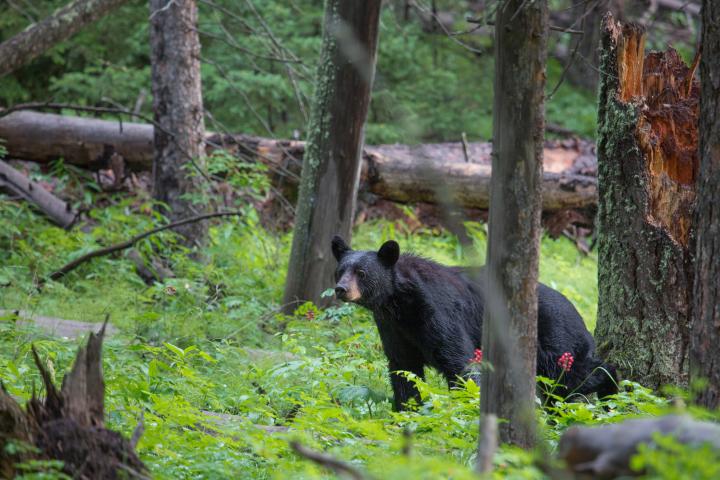Join the Almanac in a coast-to-coast exploration of America’s most beloved national parks and historic sites. This time, we visit Yellowstone National Park, where we discover the natural beauty of the park that started it all.
Yellowstone National Park
We arrived at the Yellowstone gate just as it opened at 7 a.m. Traffic was backed up, and we feared we had arrived in the middle of rush hour. It soon became clear, though, that the cars were stopped to take pictures of a young black bear traipsing through the thick forest just a few yards from the road.

Like the one we saw, this black bear wanders through the park’s healthy forests. Photo by National Park Service/Neal Herbert.
Yellowstone National Park is the world’s first and perhaps most famous national park. Before it became what it is today, it provided a home and hunting ground to many indigenous peoples, including the Shoshone and Bannock, who traveled through the region, following the migration of bighorn sheep. Many other native groups, including the Blackfeet and Crow, lived just outside the boundaries of the modern-day park, which sprawls over parts of Montana, Wyoming, and Idaho. These groups were forced out when the US government took control of the land and established the National Park in 1872.
It is not difficult to see why early American explorers would have wanted to preserve this land. The peaks and valleys, the flashing rivers, and the abundant wildlife create one of the most stunning natural backdrops we have ever seen. It was even more special in the early morning, before many visitors had arrived, when it was quiet except for bird song and the rustling of leaves.
When we stopped at a visitor center, we learned that the next eruption of Old Faithful would take place in under half an hour. Old Faithful, the park’s most famous geyser, erupts on a regular schedule, roughly every 90 minutes. We sped to the next location (crossing the Continental Divide twice), and within five minutes, the geyser erupted in an awe-inspiring column of hot water and steam.

A crowd gathers to watch Old Faithful. Photo by National Park Service/Jacob W. Frank.
Yellowstone is home to some of the world’s most robust hydrothermal activity—hot springs, geysers, fumaroles, mudpots, and more. We decided to follow the boardwalk trail through a field of other hydrothermal features including Castle Geyser, Prismatic Pool, and Grotto Geyser.
Travel Tip: When we left the park, we saw a massive line at the entrance, and we were glad we had arrived so early. This has been one of our journey’s biggest lessons: when visiting these national treasures, arrive early or late, when the light is level (for better photography) and the traffic is light.
Learn More
Visit the Yellowstone National Park website for more information on visiting this national treasure! Then check out the rest of our national park and historic site articles to see where to go next.











